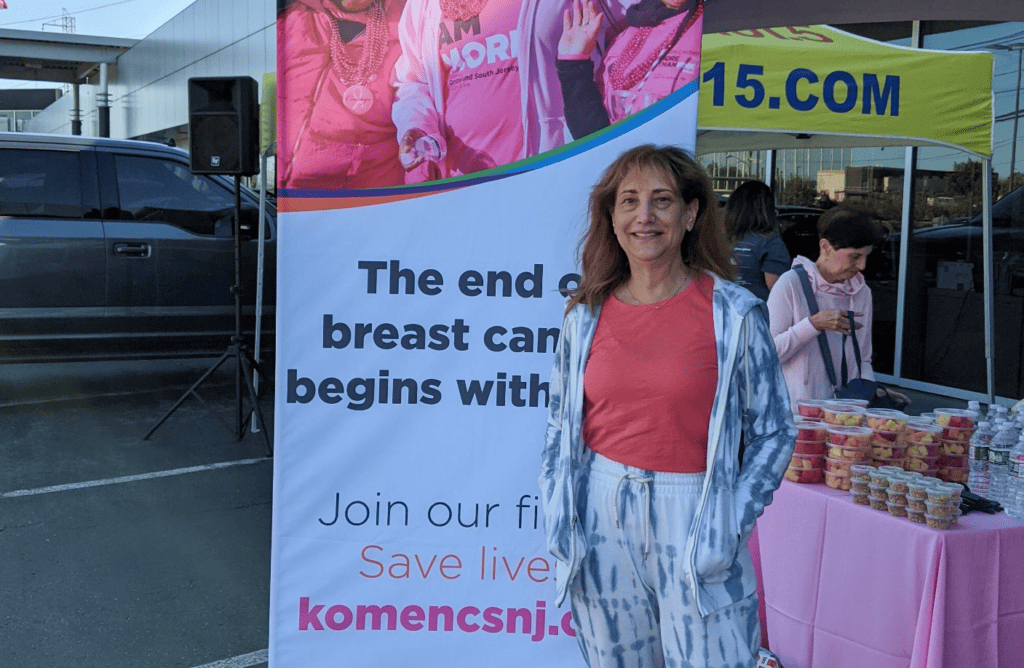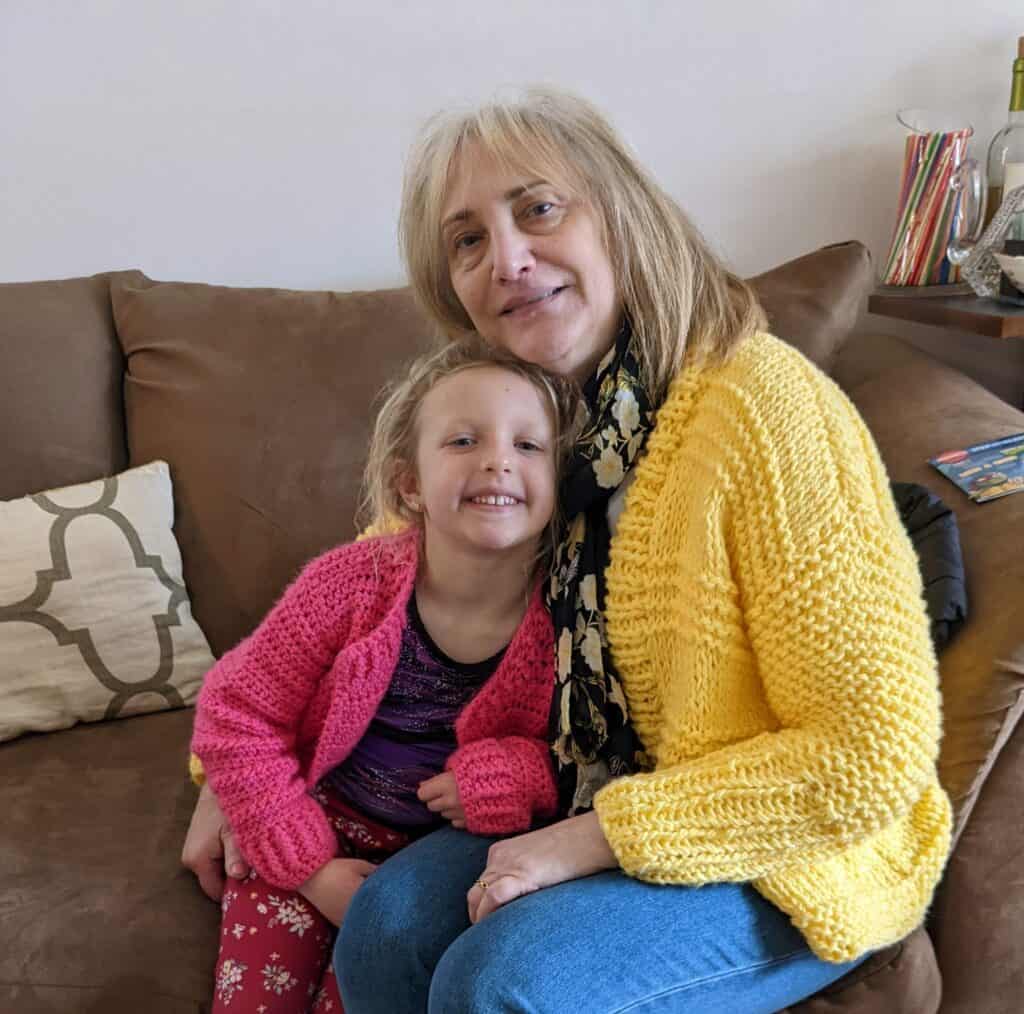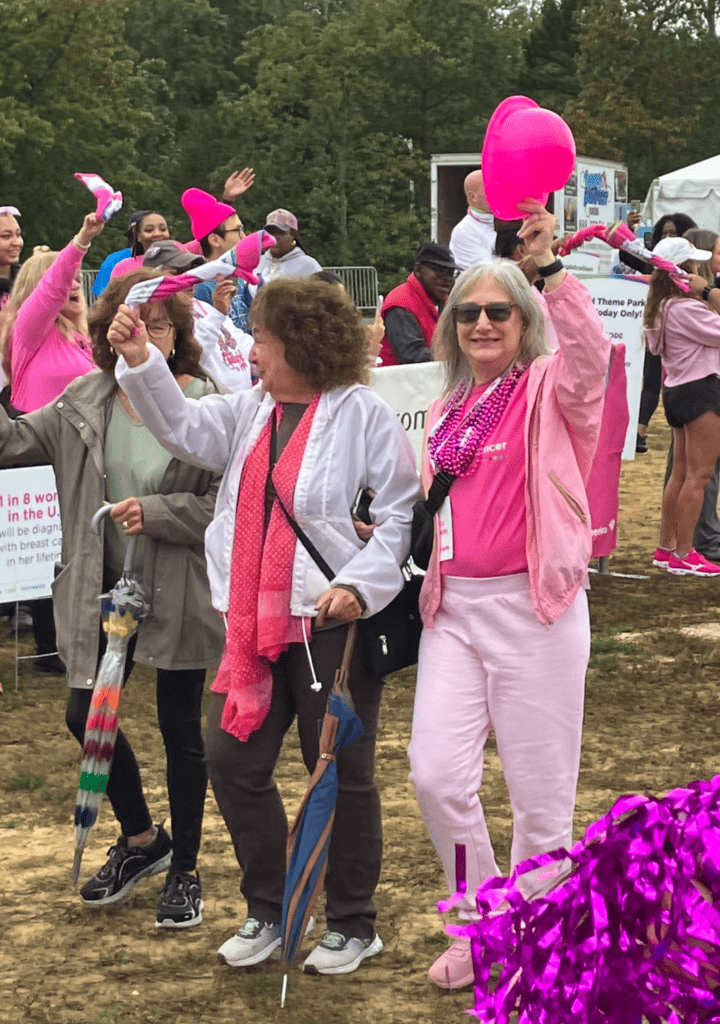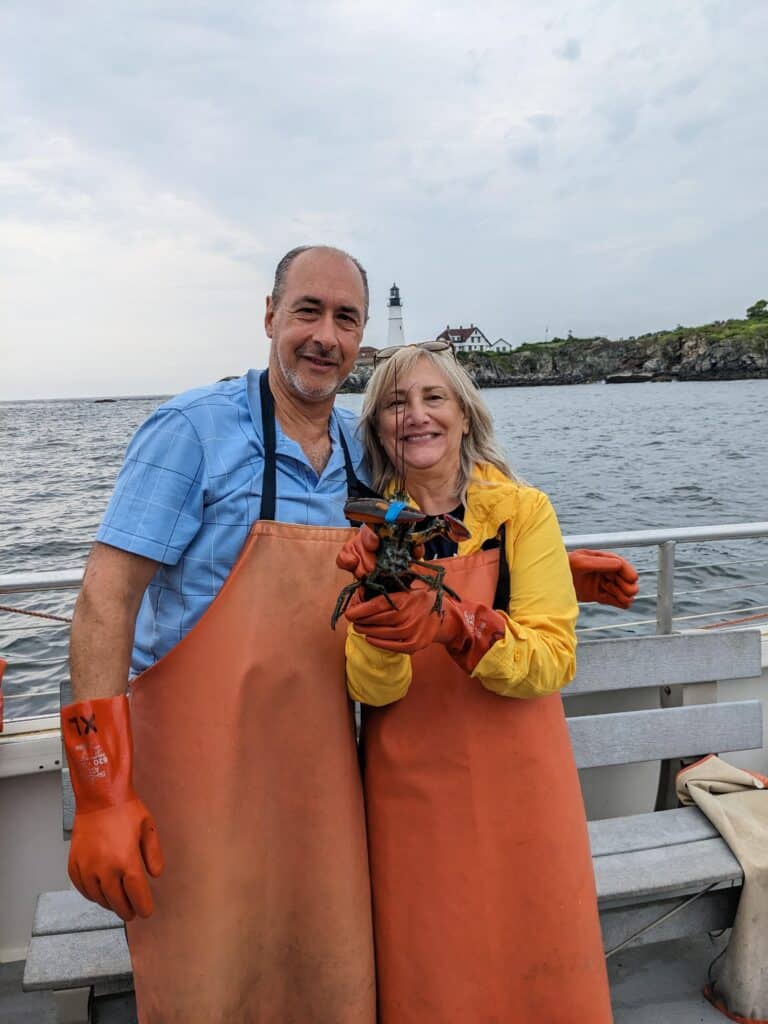
Julie Bernstein knew her family history and Ashkenazi Jewish heritage put her at a higher risk for breast cancer, but she was still shocked when she was first diagnosed with breast cancer in 2009. This is her story in her own words.
I come from a family of breast cancer, so once I began getting mammograms at 35, I was a bundle of nerves waiting for the call. It came 17 years later in October 2009. – 17 years later – with a blinking light on my answering machine. More images were needed; I would need to come back for more testing.
It was ductal carcinoma in situ, and I began my treatment with a lumpectomy. I had genetic testing, which came back negative for a BRCA gene mutation. Then, two days before my birthday, I got a second call. They had found additional cancer cells, and I would require another lumpectomy and removal of my sentinel node. The surgery was followed by radiation. Then, I just kept waiting for the other shoe to drop.
Life was hectic in late December 2019. My husband was recovering from prostate cancer surgery. I was getting ready to take him to a follow-up appointment when my daughter-in-law went into early labor with her second child. Her toddler was home with a 102-degree fever. And right in the middle of everything, I get a call. New advancements in genetic testing were available and my doctor wanted me to come in and consult with a genetic counselor. While I was negative for a BRCA gene mutation, new testing showed I did have a mutation of the ATM gene.



Once things settled down, I made the appointment. The counselor and I sat down and went through my family history. At that point, I’d already been diagnosed, as had my sister and two cousins. My mom passed away from metastatic breast cancer. I remember the counselor looked at me and said, “Julie, it’s not a matter of if you get breast cancer again, it’s a matter of when.”
I decided to move forward with a mastectomy. My appointment with the breast surgeon was scheduled for March 2020, and COVID-19 turned the world upside-down. Since my surgery was considered elective, my surgeon recommended moving forward with an annual mammogram and MRI so that if the cancer came back, we would catch it quickly.
Then came July 2021. I had my mammogram and kept busy with caring for my husband, who was recovering from bypass surgery. Then the call with my results came – the other shoe dropped. The cancer was back; it was time for surgery. Since the cancer was caught early, I didn’t need chemotherapy or radiation. My treatment consisted of a double mastectomy with DIEP flap reconstruction. That was it; I was never going to have breast cancer again.
I first learned about the MORE THAN PINK Walk during COVID, and I was intrigued at the idea of a virtual walk. I missed the following year because of my surgery, but I was back and in-person the next year. I was proud to wear 13 beads in recognition of the 13 years since my initial diagnosis. A woman came up to me and commented that she liked to see people like me because it gave her hope, and that is why I will continue to fundraise and walk because women don’t have to die of breast cancer.
Statements and opinions expressed are that of the individual and do not express the views or opinions of Susan G. Komen. This information is being provided for educational purposes only and is not to be construed as medical advice. Persons with breast cancer should consult their healthcare provider with specific questions or concerns about their treatment.



